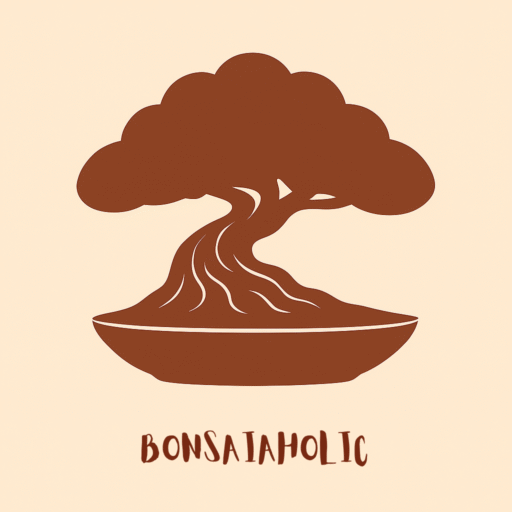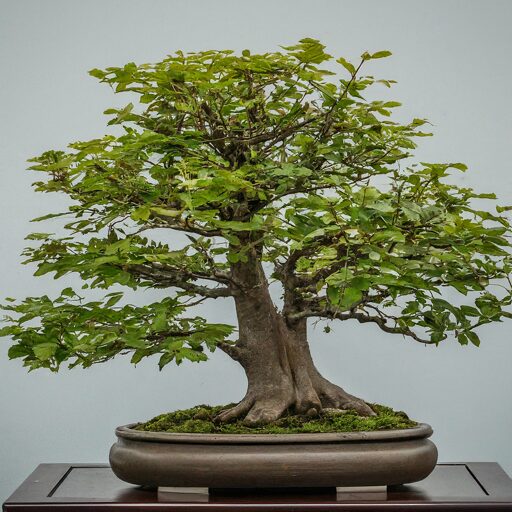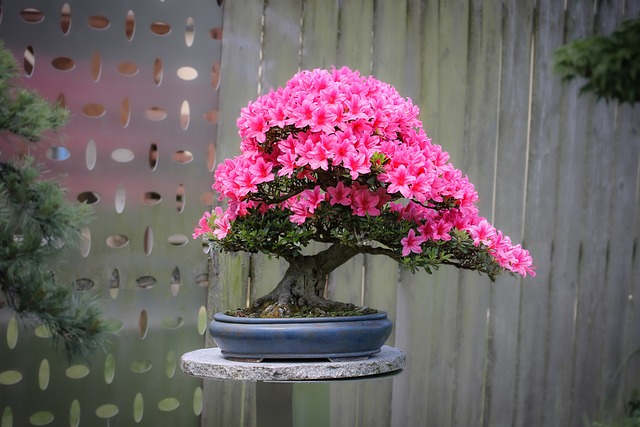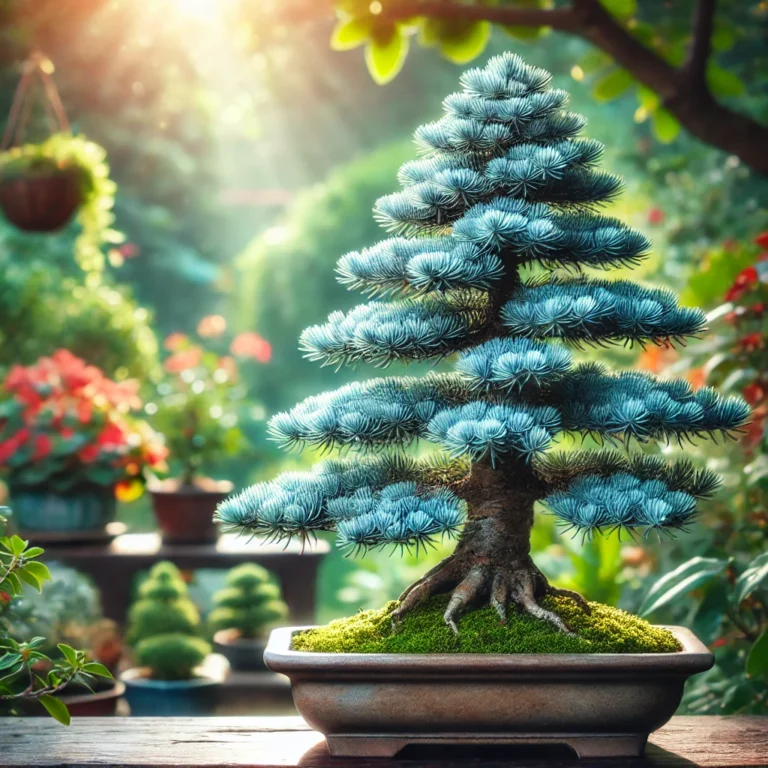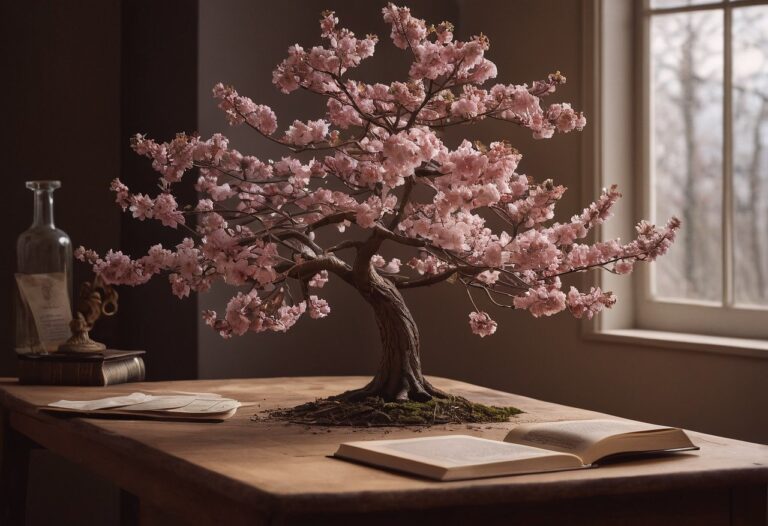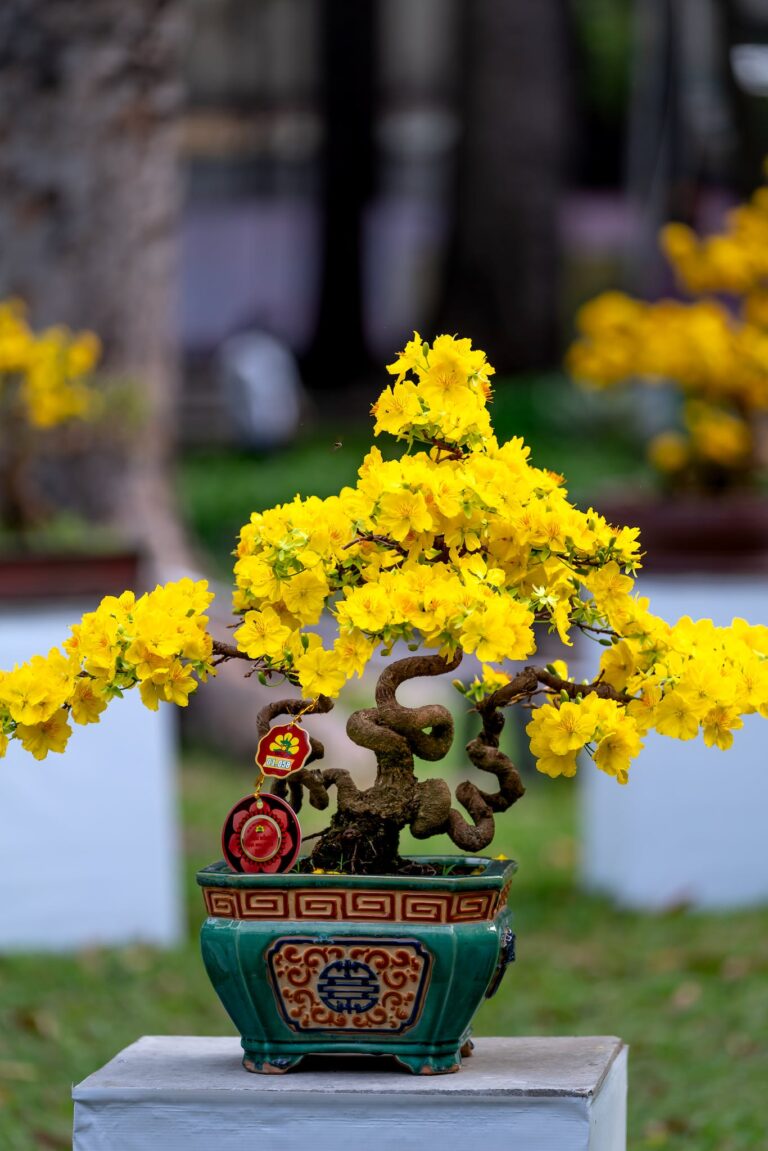What Is a Japanese Maple Bonsai?
What Is a Japanese Maple Bonsai? The Japanese maple tree is native to Japan, Korea, and China and is celebrated for its vibrant leaf colors, ranging from green to bright red, orange, and yellow. When grown as a bonsai, the Japanese maple’s delicate leaves, fine branches, and stunning seasonal transitions create a visual masterpiece.
In bonsai form, these trees typically stand between 6 inches to 24 inches tall, but their grandeur rivals that of a full-sized tree.
Benefits of Growing a Japanese Maple Bonsai
- Aesthetic Appeal: The vibrant foliage and intricate branch structure make it a centerpiece for any room or garden.
- Stress Reduction: Caring for bonsai fosters mindfulness and reduces stress.
- Seasonal Beauty: Japanese maple bonsais provide year-round enjoyment, with foliage changing colors during autumn and fresh growth sprouting in spring.
- Indoor and Outdoor Adaptability: While primarily an outdoor species, Japanese maples can be displayed indoors temporarily for events or decor.

Choosing the Right Japanese Maple Variety
Several Japanese maple varieties are suitable for bonsai cultivation. Choosing the right one depends on your aesthetic preferences and climate.
- Acer palmatum ‘Deshojo’: Known for its bright red spring leaves.
- Acer palmatum ‘Kiyohime’: Compact growth and small leaves make it ideal for bonsai.
- Acer palmatum ‘Seigen’: Displays fiery red foliage in spring that turns green in summer.
- Acer palmatum ‘Beni Maiko’: Renowned for its vibrant red and orange hues during autumn.
How to Cultivate a Japanese Maple Bonsai
1.Choosing the Right Environment
Japanese maple bonsais thrive in temperate climates. They prefer outdoor conditions with access to sunlight and protection from harsh elements.
- Light: Place your bonsai in a spot with morning sunlight and afternoon shade. Excessive direct sunlight can scorch the leaves.
- Temperature: Ideal temperatures range between 55°F and 75°F (13°C–24°C). Protect the tree during frost or extreme heat.
- Humidity: Maintain adequate humidity levels by misting the foliage or placing a humidity tray beneath the pot.
2. Potting and Soil
The right pot and soil are critical to your bonsai’s health.
- Pot Selection: Use a shallow, well-draining bonsai pot to enhance aesthetics and control root growth.
- Soil Mix: Use bonsai soil comprising akadama, pumice, and lava rock. This mix ensures proper aeration, drainage, and nutrient absorption.
3. Watering
Japanese maples require consistent watering but are sensitive to overwatering.
- Frequency: Check the soil moisture daily and water when the top inch feels dry.
- Technique: Water evenly until it drains from the pot’s holes. Avoid waterlogging.
- Seasonal Variations: Increase watering in summer and reduce during dormancy in winter.
4. Fertilizing
Fertilize regularly to promote healthy growth and vibrant foliage.
- Spring and Summer: Use a balanced fertilizer (NPK 10-10-10) every two weeks.
- Autumn: Switch to a low-nitrogen fertilizer to prepare for dormancy.
- Winter: Avoid fertilizing during the dormant phase.
Styling and Pruning Japanese Maple Bonsai
Styling a bonsai involves shaping its trunk, branches, and foliage to achieve the desired aesthetic.
1. Pruning
Pruning is essential for maintaining shape and promoting healthy growth.
- Structural Pruning: Conduct during late winter or early spring before new growth begins. Remove unwanted branches and refine the tree’s structure.
- Maintenance Pruning: Trim excessive growth in late spring or early summer to maintain shape. Avoid heavy pruning during autumn to prevent stress.
2. Wiring
Wiring helps guide the branches into specific shapes.
- Use anodized aluminum or copper wire for flexibility.
- Wrap the wire loosely around branches to avoid cutting into the bark.
- Remove the wire after 3–6 months to prevent scarring.
3. Defoliation
Partial defoliation in early summer can improve ramification (branch splitting) and reduce leaf size. This technique should only be used on healthy trees.
Seasonal Care for Japanese Maple Bonsai
Proper care varies with the seasons:
Spring
- Inspect for pests as new growth begins.
- Repot if necessary to avoid root-bound conditions.
- Apply a balanced fertilizer.
Summer
- Protect from excessive sunlight by placing the bonsai in a shaded area.
- Increase watering frequency to combat heat.
Autumn
- Enjoy the brilliant fall colors.
- Gradually reduce watering as the tree prepares for dormancy.
Winter
- Protect the tree from frost by using a cold frame or bringing it indoors temporarily.
- Avoid watering excessively during dormancy.
Common Challenges and How to Overcome Them
1. Leaf Scorch
- Symptoms: Brown, crispy leaf edges due to excessive sunlight or wind.
- Solution: Relocate to a shaded area and maintain consistent watering.
2. Root Rot
- Symptoms: Wilting leaves and a foul odor from the soil.
- Solution: Repot in fresh, well-draining soil and adjust watering habits.
3. Pests
- Common Pests: Aphids, scale insects, and spider mites.
- Solution: Use insecticidal soap or neem oil. Inspect the bonsai regularly for infestations.
4. Weak Growth
- Cause: Poor fertilization or insufficient sunlight.
- Solution: Adjust fertilizer schedule and ensure proper light exposure.
Why Japanese Maple Bonsai Is Perfect for Beginners
While maintaining a bonsai tree can seem daunting, the Japanese maple bonsai is beginner-friendly due to its adaptability and resilience. Its vibrant foliage and relatively straightforward care requirements make it a rewarding project for those new to bonsai cultivation.
Japanese Maple Bonsai and Feng Shui
In Feng Shui, the Japanese maple bonsai is believed to bring harmony, balance, and positive energy to its surroundings. Place it in the east or southeast area of your home to enhance health, growth, and prosperity.
Conclusion
The Japanese maple bonsai is more than just a plant—it is a testament to nature’s beauty and the artistry of bonsai cultivation. By providing the right care, you can enjoy its stunning foliage and graceful structure for decades.
Whether you are captivated by its vibrant colors or the tranquility it brings to your space, cultivating a Japanese maple bonsai is a fulfilling journey. Start your bonsai adventure today and witness the elegance of nature unfold in miniature form.
FAQs
1. Can I grow a Japanese maple bonsai indoors?
Japanese maples are best suited for outdoor conditions. However, they can be displayed indoors temporarily if proper lighting and humidity are maintained.
2. How long does a Japanese maple bonsai live?
With proper care, a Japanese maple bonsai can live for over 50 years, sometimes even a century.
3. What is the best time to repot a Japanese maple bonsai?
Late winter or early spring, before new growth begins, is the ideal time to repot.
4. How can I protect my bonsai from frost?
Use a cold frame, mulch around the pot, or bring the bonsai indoors during freezing temperatures.
Embrace the art of bonsai cultivation and let your Japanese maple bonsai flourish with grace and beauty!
